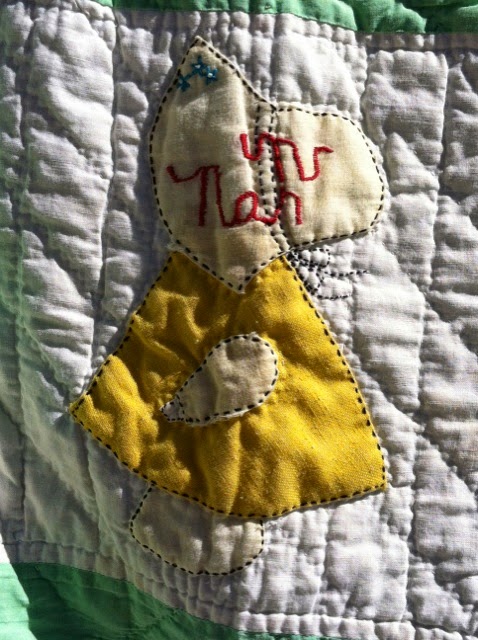To attempt singling out any one thing that especially beckons me when it comes to collecting the relics of our shared American past would be pointless. My eyes and my heart are wide roaming. Stored in boxes in my barn house in Texas are countless quilts that I have--in my mind, rescued!--from yard sales around east Texas. As I saw it they were headed for the dog bed or rag bin, or worst of all, the burn pile. I even bought a few Texas quilts at a yard sale here in Albuquerque three years ago--from the Rethke-Behringer-Shelton families of Lee and Hill Counties Texas.
 |
| Rethke-Behringer-Shelton families |
My Texas German grandmother (1897-1983) wouldn't have given a second thought to so disposing of an old, well-worn and well-loved quilt. In fact, I never saw a quilt that came from that German farming, land-owning family that settled in northwest Harris County in 1866, an area that for sometime now that has been part of the sprawling city of Houston. Having been a collector for 45 years, I remember as clearly as if it had been yesterday, my grandmother sitting in a rocker and me asking her, "Grandma, why don't we have anything?" Where were all the old things that would have come from our family? "I don't know," she replied, "I guess we gave it all to the 'niggers'." That was in fact the habit of those who had things. They gave them to the domestic workers. She didn't mean anything ugly or harmful by her term. It was simply the word she had heard and used all of her 80 some odd years.
Recently, I came across an old quilt at a yard sale in our neighborhood in Albuquerque. Sunbonnet Sue is the name of the pattern. The quilt was dingy and had the smell of old cloth that hasn't been washed for a long time. It's the common smell of years of human habitation that greet the senses when you walk into a house that has been denied fresh air for years. I walked away from the quilt at $15. "Let me know if you want to make an offer," a slender, silver-haired woman standing nearby said. Just about to head back to the truck, I said to my friend Tom, "I'm going to talk to her about that quilt."
It turns out the quilt was made by her grandmother in Oklahoma. Grandmother had made a quilt for each of her grandchildren, incorporating into each quilt something significant to the particular child. In this case, on the sunbonnet in the center is embroidered the recipient's name, "Nan". According to Nan, the fabrics on the quilt came from her old dresses. So you ask why, why would someone sell a quilt made by her grandmother? I don't question that, but I knew that I had to rescue it, and I thank Nan for trusting it to my hands.
I lost no time in finding out how to clean the quilt. Soaking it in Dreft--recommended for baby clothes, and on one website, for washing old quilts--appeared to be the solution. I drew a bathtub full of warm water and stirred in the powered Dreft, hopeful of my efforts. As the quilt soaked, the water turned a grayish-brown, and the final results brought a big smile to my face.
I won't bother Nan with the results, although I know the location of the yard sale where I bought Sunbonnet Sue. That would be an invasion of Nan's privacy. But if she somehow comes across this story, I want her to know that Sunbonnet Sue is in good hands. I have taken part in her stewardship. Maybe someone will come along who wants Nan's quilt for her own child or grandchild.





































